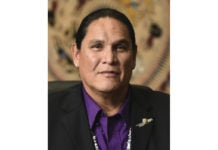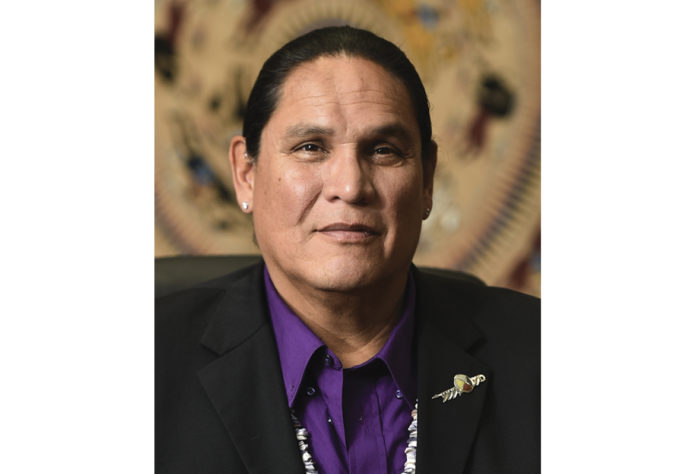by Ernest L. Stevens, Jr.
The month of August brings to mind vacation, rest, and relaxation. In Washington, D.C., August is associated with the annual summer congressional recess when members of Congress return to their districts to prepare for what is shaping up to be another historic national election. August is also the time when the Indian gaming industry reflects on the National Indian Gaming Commission’s (NIGC’s) annual revenue report and, of course, it is the time when our industry joins the Oklahoma Indian Gaming Association (OIGA) for its Annual Conference and Trade Show.
In 2023, the NIGC announced that Indian gaming revenues hit yet another one-year record for gross gaming revenue. According to the NIGC, 246 tribal governments operating 504 facilities in 29 states generated approximately $41.9 billion in gross revenue – a steady 2.4 percent increase over 2022. Tribal gaming operations generated an additional $5.1 billion in gross revenue from ancillary/gaming-related enterprises, including hotels, restaurants, entertainment, and related operations. As a result, Indian gaming accounted for a total of $47 billion in direct gross revenues in 2023.
As expected, the year over year increase was less than the +4.9 percent growth in 2022, and the astronomic +40 percent growth in 2021. Those figures represented the massive rebound that Indian gaming experienced that is credited to tribal leaders and Indian gaming operations’ response to the pandemic.
With the upcoming OIGA annual conference in mind, it’s important to acknowledge that the Oklahoma City and Tulsa regions of the NIGC were key in setting the latest record for annual Indian gaming revenue. Oklahoma City and Tulsa combined for a total of $6.8 billion in 2023, the second-highest revenue total among the eight regions of NIGC. Oklahoma City’s revenue increased by more than $66 million over 2022, and the Tulsa region grew by $71 million. Both regions are home to over 149 gaming operations.
The NIGC report confirms findings from the Indian Gaming Association’s (IGA’s) annual Economic Impact Report, reaffirming the fact that the Indian gaming industry continues to bolster treasuries of tribal governments, their neighboring communities, and charitable organizations. In 2023, Indian gaming operations directly transferred more than $20.8 billion to tribal governments nationwide.
After overhead costs are met, tribal governments dedicate the net proceeds of Indian gaming operations to essential government services. This is the key distinguishing factor between commercial gaming, whose revenues go to shareholders, and tribal gaming.
Tribal governments use gaming revenues to improve the lives of those living on Indian lands. Indian gaming revenues are building homes, improving healthcare, education, public safety and social programs for Native youth and elders. Gaming revenues help rebuild a wide range of infrastructure, including roads, water and wastewater systems, communications systems, and much more. Over the past several decades, our industry is also preserving and reviving Native culture, language, and traditions.
While Indian gaming is the single largest revenue generator for tribal government programs and services, at its core, Indian gaming is first and foremost about opportunity and job creation. In 2023, our industry generated 272,610 full-time jobs at the 516 tribal gaming operations. As a result, Indian gaming remains among the top 20 employers in the U.S. When indirect jobs are included, Indian gaming provides work for more than 670,000 American families. IGA’s 2023 Economic Report indicates that 34 Native Nations in Oklahoma generated more than 87,000 jobs, amounting to more than $4 billion in direct and indirect wages.
Indian gaming has provided many Native Americans with their first opportunity to work at home in Indian Country. Jobs generated by Indian gaming are bringing entire families back home to reservations nationwide. Because of Indian gaming, reservations are again becoming livable homesteads, as promised in hundreds of treaties.
The economic impacts of Indian gaming are profound. However, the benefits of Indian gaming do not stop at the reservation border. Our 2023 impact report shows that nearly three in four direct jobs created by Indian gaming go to our non-Native neighbors in mostly rural communities. A related 2019 report on Indian gaming impacts concluded that counties with or near tribal gaming operations see increases in the employment-to-population ratio and decreases in mortality rates.
While tribal governments are sovereign, not subject to direct taxation by any other government, Indian gaming generates substantial resources through indirect income, employment and sales taxes for the federal and nearby local governments. In 2023, Indian gaming was responsible for generating federal taxes, $4.8 billion in state taxes and revenue sharing agreements, and $1.4 billion in county taxes – a total of $19 billion.
The Oklahoma Gaming Compliance Unit reported that revenue sharing by the 34 Native Nations in the state increased by 5.6 percent over 2022, surpassing $202 million in 2023. As directed in their compacts, tribal government revenue sharing in Oklahoma is dedicated to a variety of state programs – allocations are made to the Education Reform Revolving Fund, the General Revenue Fund, and the Department of Mental Health and Substance Abuse Services.
Indian gaming has also led to increased political participation by Native Americans nationwide. One positive outgrowth of this increased participation is that many Native people are now seeking office in state and local government. A record 140 Indigenous candidates sought federal and state offices in the November 2022 election, and we are seeing those numbers grow as we approach the upcoming November elections.
As the August recess comes to a close, Members of Congress will return to Washington, D.C. for a brief September session before departing again for a month-long campaign season, leading up to the November 5th elections. However, IGA and our Member Tribes will remain hard at work this fall with meetings scheduled each month leading up to and through the elections to educate congressional leaders on Indian Country’s top priorities. IGA will continue to discuss the tremendous economic impact Indian gaming has on our country at our September Mid-Year Conference. The conference will be held Sept 16-18, 2024, at Tulalip Tribes Resort and Casino in Washington State. We will also focus on the upcoming elections and future federal Indian law policy. We hope to see you there.
Ernest L. Stevens, Jr. is Chairman of the Indian Gaming Association. He can be reached by calling (202) 546-7711 or visit www.indiangaming.org.














































